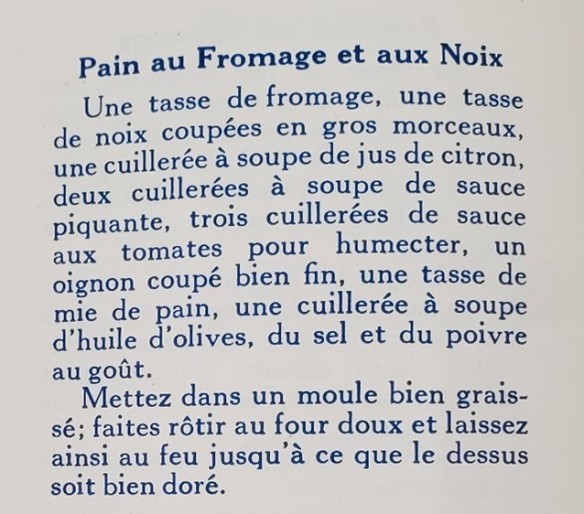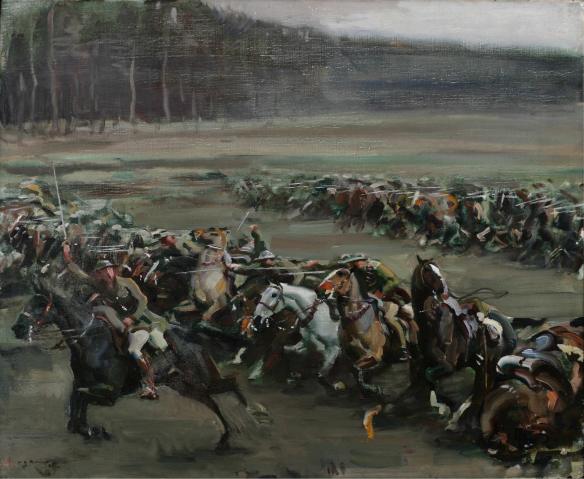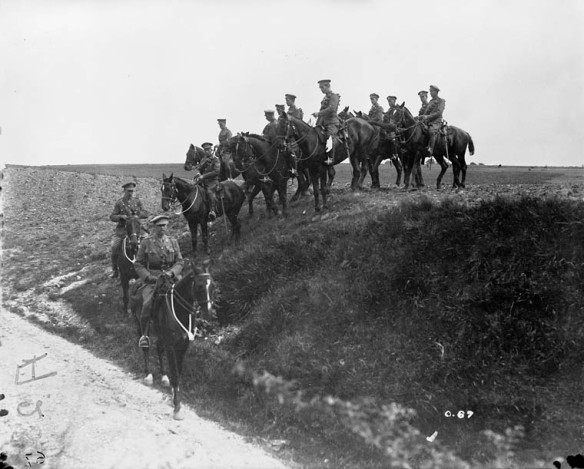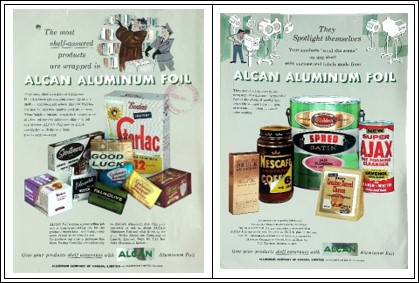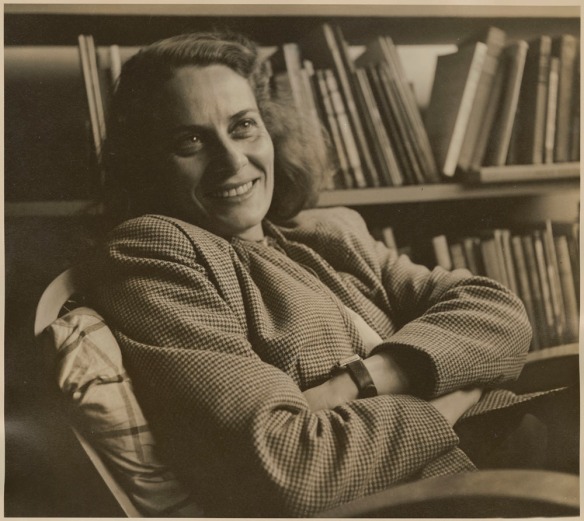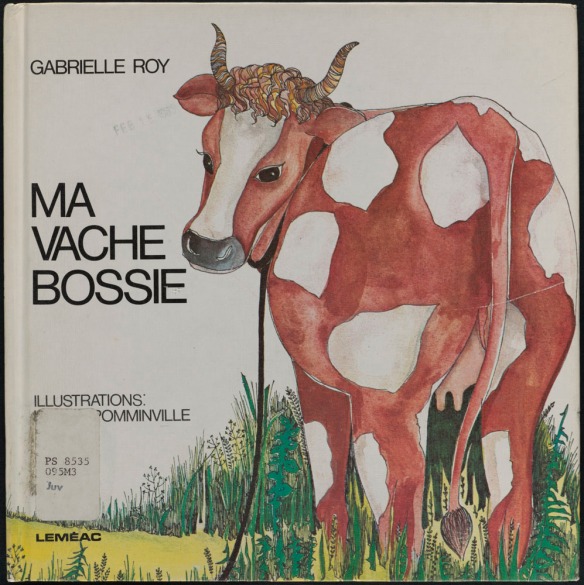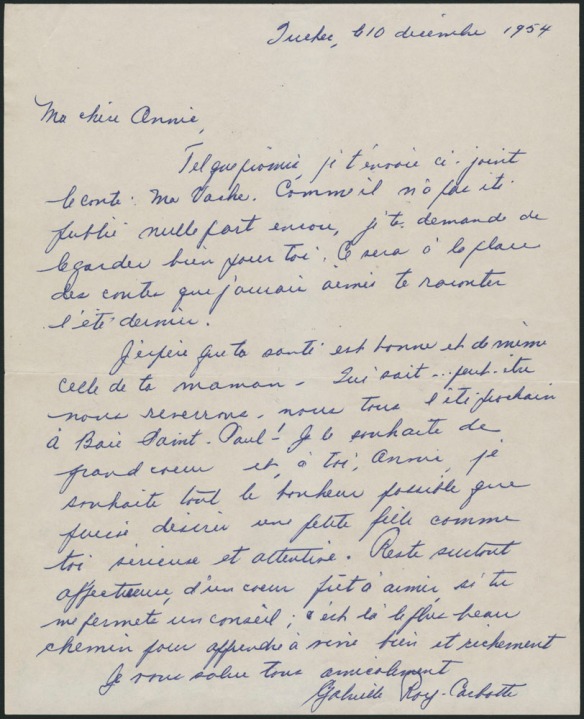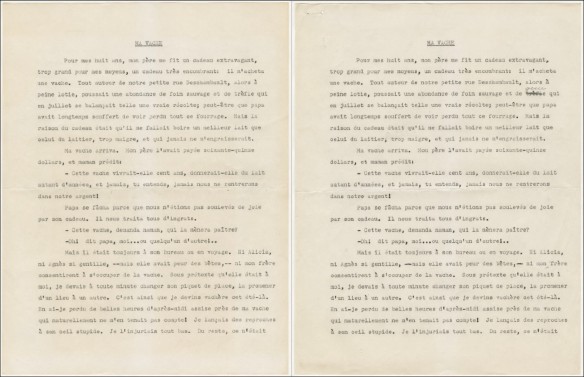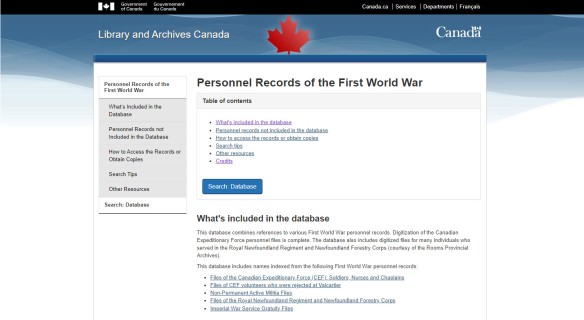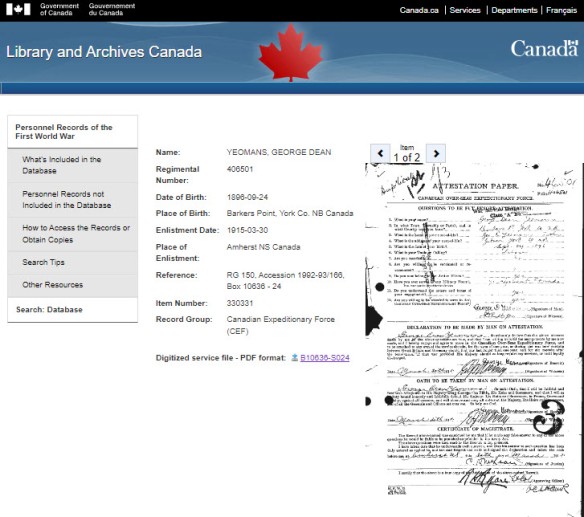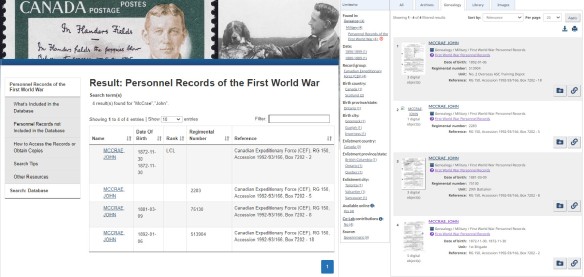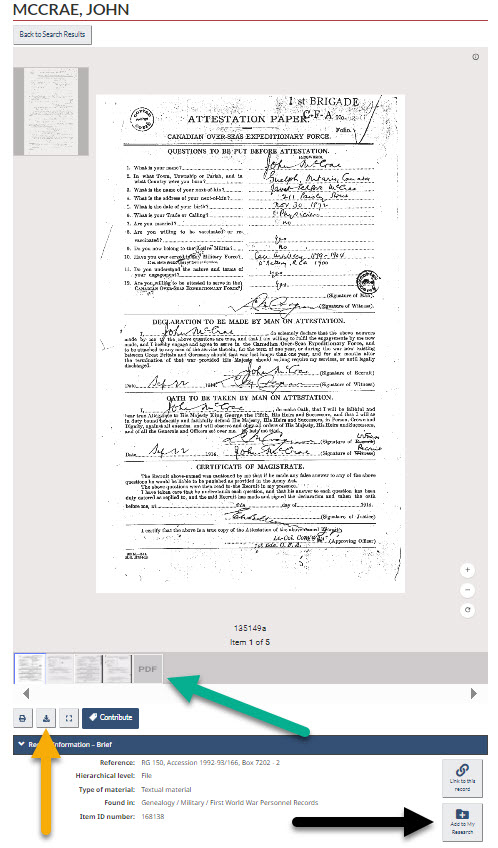This article contains historical language and content that some may consider offensive, such as language used to refer to racial, ethnic, and cultural groups. Please see our historical language advisory for more information.
I would like to thank Mary Munk (a retired colleague from Library and Archives Canada’s Genealogy and Family History); my aunt, Anna Greenhorn; my cousin, Pat Greenhorn; and Steven Schwinghamer (Pier 21) for their help with part 3 and part 4 of this series.
While writing the third article about my grandfather, Robert Roy Greenhorn, I had not located any documents pertaining to his emigration to Canada. I reached out to Quarriers Records Enquiry, but according to the British Home Children in Canada website, the reports kept by Quarrier’s Orphan Homes of Scotland about the children’s progress in their Canadian homes were destroyed, apparently as a result of a miscommunication when the Canadian operation closed in 1938. I had also hoped to track down records regarding his placements with the two host families he lived with after arriving at Fairknowe Distributing house in Brockville, Ontario in 1889, but I have had no such luck to date.
Thus far I have only been able to locate two records specifically related to my grandfather.
The first is this group portrait taken in March 1889 shortly after his arrival to Fairknowe Home. Robert and his brother John are both in this photograph. All the boys’ names are listed alphabetically by first name below the image. I have never seen a childhood photograph of my grandfather, making it impossible to identify him. According to my aunt, Anna Greenhorn (my Uncle John’s wife), my grandfather was tiny for his age. I know from his Passenger List that he was among the youngest boys in his party. I wonder if he was amongst the smallest boys standing in the front row?

“The Siberian Arrival Party,” March 26, 1889, Fairknowe Home, Brockville, Ontario. Photo: William Quarrier- Brockville Ont 7,200 immigrated – BRITISH HOME CHILDREN IN CANADA (weebly.com)
The second reference is a brief statement found on page 43 in Narrative of Facts, William Quarrier’s annual report for 1894. It mentions “…a boy of 9, brother to two taken before and now in Canada doing well. This one has been with a married sister, but he is getting beyond control and although so young has been pilfering, etc.” (Source: untitled (iriss.org.uk)) The nine year old boy is Norval, my grandfather’s youngest brother, and Jeanie, now married, is the sister. Norval left Scotland March 29, 1894. He arrived in Halifax, Nova Scotia on April 16, 1894, before going onto Fairknowe Home in Brockville, Ontario.
In Part 2 of this series, I left off with my grandfather and his brother, John, transferring from the City Orphan Home in Glasgow to the Orphan Homes of Scotland, located at Bridge of Weir, approximately 25 kilometres away. They moved after beds became available following that year’s emigration of boys to Canada. This was June 11, 1886. The Orphan Homes of Scotland would be home to Robert and John for almost three years.
By the time my grandfather and his brother arrived at the Orphan Homes of Scotland, it had grown from two cottage homes that could each accommodate 20 to 30 children, into a self-contained community with just under 600 children in residence (Source, p. 37). Known as “The Village,” the community was made of 16 cottage homes, laundry facilities, workshops and bake houses, a store and post office, a stable and cowshed, a poultry coop, a greenhouse, the Mount Zion Church, classrooms and a house for the superintendent. The central building housed the main hall, school rooms and teachers’ lodgings. There was also the “James Arthur,” a land-locked ship for training boys who would work in the navy.
On March 14, 1889, a special meeting was held at “The Village” to bid the boys bound for Canada a farewell. Robert and John, along with 128 other boys, departed Scotland the following day. Members of the public from Glasgow and Paisley were invited to the reception. According to a story in the Glasgow Herald titled “Orphan Homes of Scotland: Departure of Children for Canada” (March 15, 1889, p. 8.), several hundreds of vehicles carrying well-wishers arrived at Bridge of Weir Station. I will never know if Robert and John’s older sister Jeanie, who had been working in Paisley in 1885, was among the guests. If she did attend, I hope she had an opportunity to see her younger brothers one last time and give them both a hug goodbye.
Every boy and girl who emigrated to Canada was given a wooden trunk, stamped with their first initial and surname. My cousin, Pat Greenhorn, inherited our grandfather’s trunk, the only memento remaining from his childhood. As mentioned in Part 1 of this series, each child was expected to work, generally as domestic servants for the girls and farm labourers for the boys. Therefore, the trunks were equipped with work clothes fit for the Canadian seasons, an outfit for church, toiletries, a sewing kit for mending socks and clothing and a Bible. Additionally, the children were given a copy of John Bunyan’s Pilgrim’s Progress, a religious allegory about a man named Christian. Ashamed and filled with sin, Christian leaves the City of Destruction for the Celestial City in search of redemption. Undoubtedly, this popular book was chosen for the religious and moralistic teachings to encourage the children as they embarked on their journey and a new life in Canada.

Robert Greenhorn’s trunk from Quarrier Orphan Homes of Scotland. Photograph courtesy of Pat Greenhorn.
Robert and John travelled on the S.S. Siberian, operated by the Allan Line. LAC does not have any digitized images of this ship. It does, however, have a postcard of the S.S. Sardinian, which brought Home Children to Canada beginning in 1875. It is similar to the vessel my grandfather travelled on. The S.S. Sardinian was also featured on the 2010 Canadian postage stamp commemorating Home Children (see Part 1).

The S.S. Sardinian, operated by the Allan Line, ca. 1875-1917 (a212769k).
LAC has the Passenger List for the Quarrier boys, along with the rest of the cabin passengers, departing from Glasgow and Liverpool to Canada on the S.S. Siberian in March 1889. My grandfather, entered as Rob Greenhorn, is among the boys aged nine.
As with the Quarrier’s emigration parties, my grandfather travelled to Canada in steerage, the cheapest fare on long-distance steamer voyages. Descriptions of these living and sleeping quarters sound miserable. Located in the space containing the machinery, the lowest part of a ship, passengers in steerage class were overcrowded and had little fresh air, causing an unbearable stench. (Steerage – Wikipedia). In his 1889 annual report, William Quarrier thanked the Allan Line “for the convenience and comfort of the party,” which was “as usual most liberal and satisfactory.” (1889, p. 24 untitled (iriss.org.uk)) My grandfather’s recollection of the voyage differed from that of Quarrier’s. During a conversation last summer with my Aunt Anna, she recounted Robert’s experience on the S.S. Siberian. According to my grandfather, he and the other boys were packed like sardines, with 14 in a cabin and thick air that stunk. (Source: conversation, Anna Greenhorn and Beth Greenhorn, August 22, 2023)
My grandfather arrived in Halifax, Nova Scotia on March 26, 1889, nine days following their departure. After deboarding the ship, the boys were processed by immigration officials in the cargo shed at Pier 2. This photograph from the Nova Scotia Archives shows what it looked like before fire destroyed it in 1895.

Pier 2 cargo shed, with the Intercolonial Railway Co.’s Elevator in the background, Halifax Harbour, before 1895. Photo: Harry and Rachel Morton Fonds, accession no. 2005-004/004, Longley Album Part 1, no. 40, Nova Scotia Archives.
Prior to 1892, the Immigration Branch was under the jurisdiction of the Department of Agriculture. The immigration facilities in Halifax were rudimentary. In January 1889, three months before my grandfather’s arrival, the Deputy Minister of Agriculture, John Lowe, inspected Pier 2 cargo shed. He concluded it was less than adequate. In a memorandum, dated April 23, 1889, he wrote:
At present the immigrants are landed in the freight shed at the I.C.R. [Inter Colonial Railway] deep water terminus. There is a small room at the corner of this intended for the shelter of women and children, but its accommodation is altogether insufficient for the numbers of immigrants arriving. Great inconvenience arises…in the freight shed and when large numbers come and have to wait for some hours…the hardships inflicted on the immigrants are very severe, serious sickness having in some cases been caused to delicate children. Proper shed accommodation for the use of immigrants arriving at Halifax is, for the reasons stated, are both absolutely necessary and urgent. Another winter should not be allowed to pass without the erection of such accommodation. (RG17, vol. 610, file 69092)
Following the immigration inspection, my grandfather and his party boarded an Intercolonial Railway train bound for Fairknowe Home in Brockville, Ontario. The distance between Halifax and Brockville is 1,730 kilometres (1,074 miles). This would have been another exhausting trip, taking at least several days or more.
In the fourth and last article of this series, Robert Roy Greenhorn’s story will take us to Canada; more specifically, to Fairknowe Home in Brockville, Ontario and later to Philipsville, Ontario, where he would live for the remainder of his life.
Additional Resources
Beth Greenhorn is an Online Content Manager in the Outreach and Engagement Branch at Library and Archives Canada.









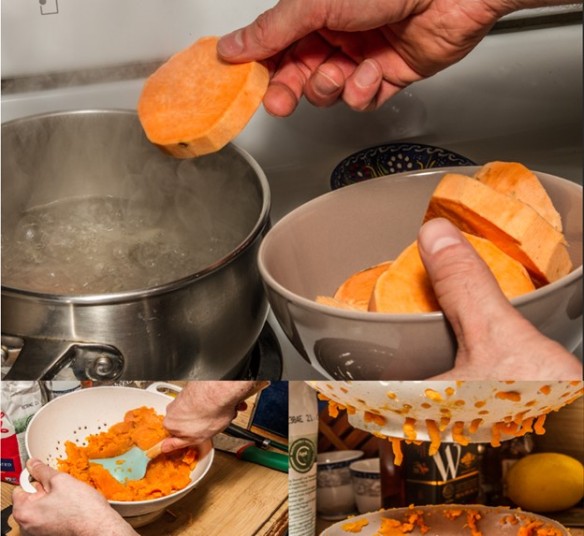


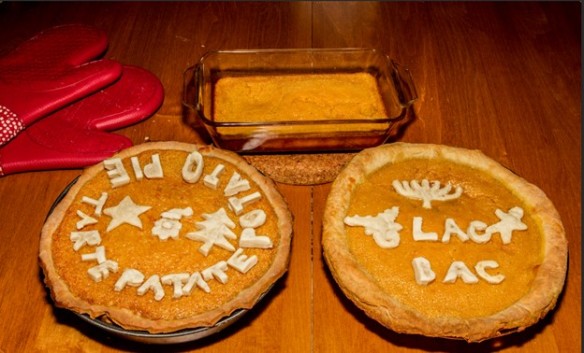
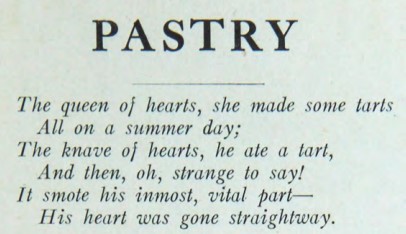
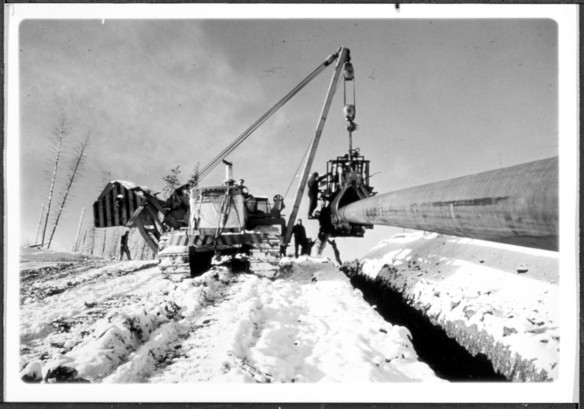
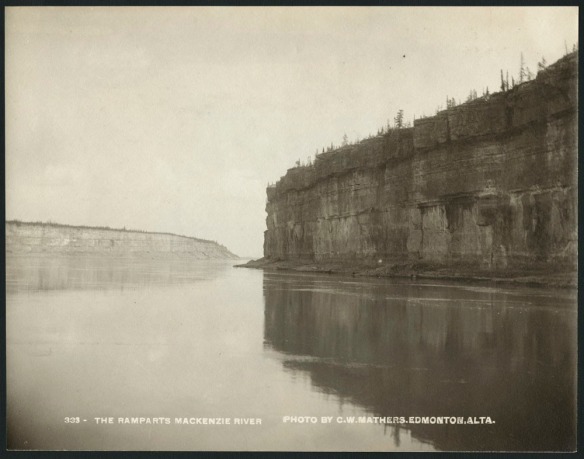
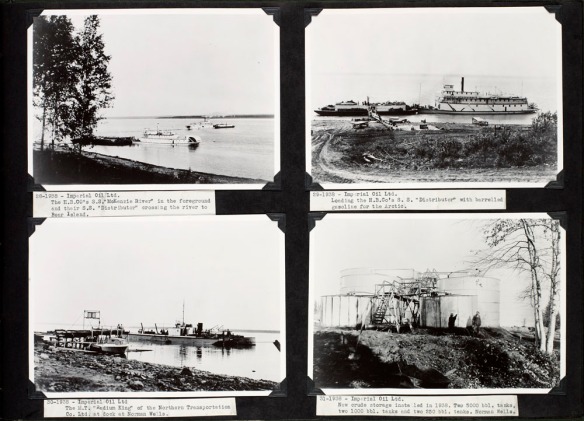
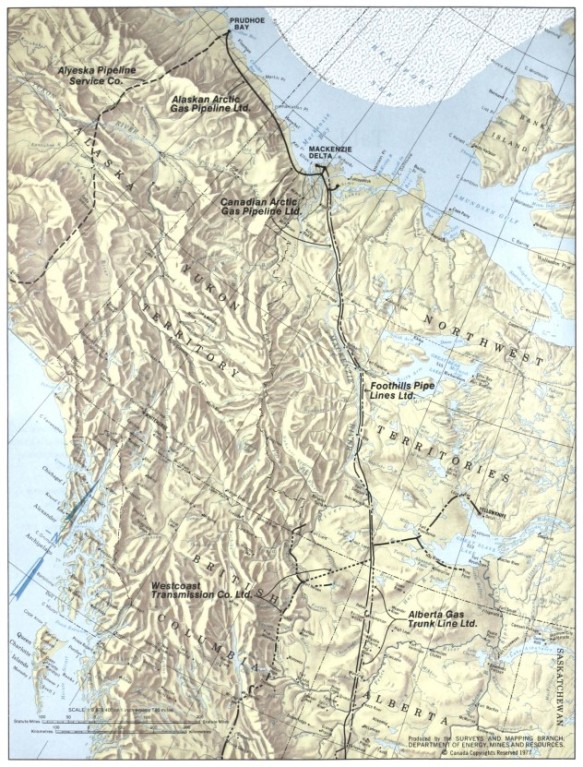
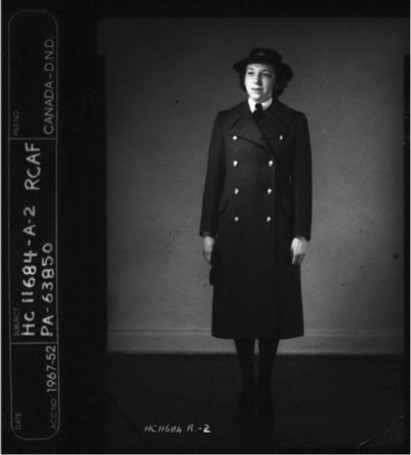
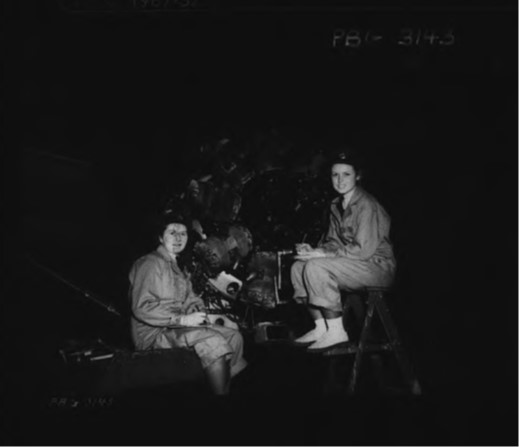
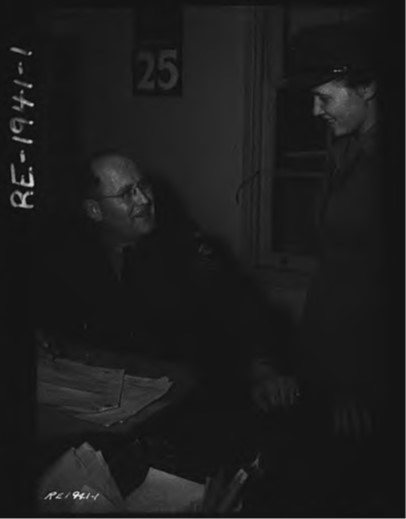
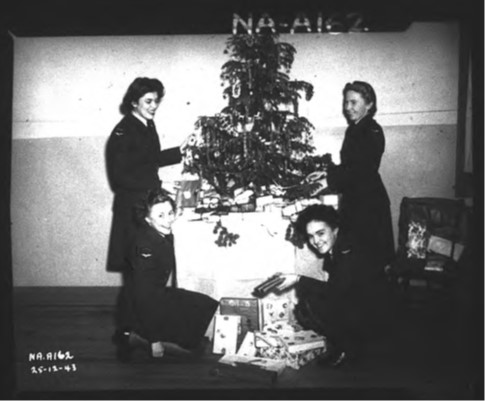
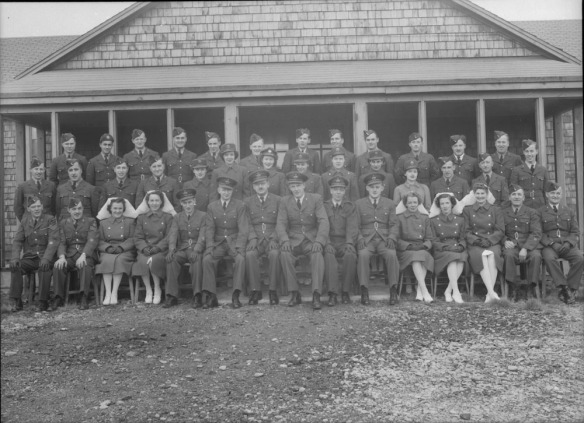
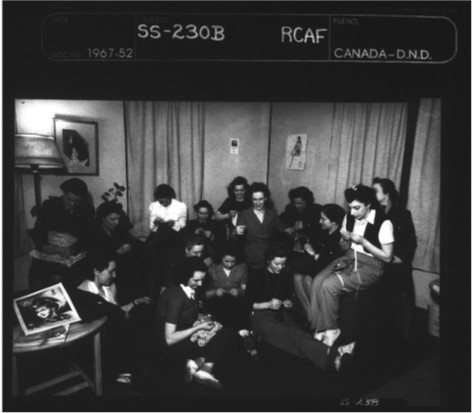
![Cover page of a booklet with the inscription "Mangeons du fromage : Recettes et menus" [Translation: Cheese Recipes for Every Day].](https://thediscoverblog.files.wordpress.com/2024/03/image-1.jpg?w=584&h=863)
